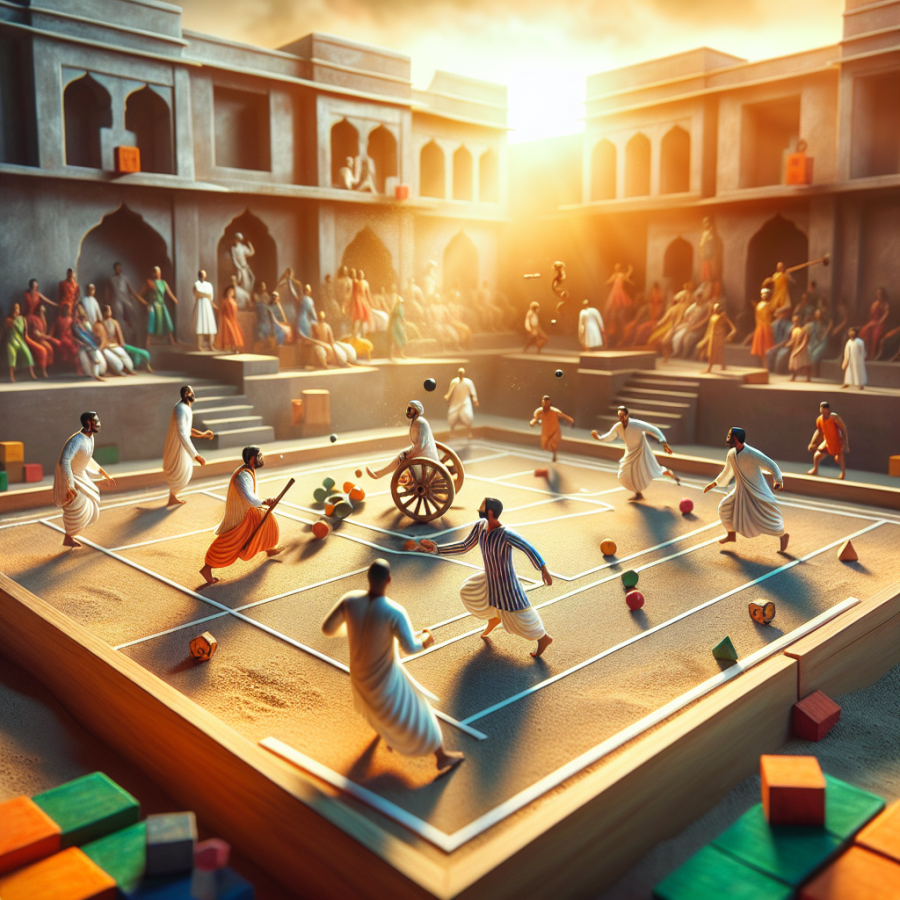Exploring the Roots of Atya-Patya: India's Hidden Athletic Gem
Atya-Patya may not be widely known on the international sports stage, but in India, it is a traditional sport that holds a significant cultural heritage. This indigenous game, rooted deeply in the history of the subcontinent, is an athletic spectacle that combines speed, strategy, and skill.
The origins of Atya-Patya are shrouded in antiquity, with references to similar games found in ancient Indian scripts and folk traditions. Some historians assert the game dates back to the times of the Mahabharata, where warriors played a game resembling Atya-Patya to maintain their fitness. Regardless of its true chronological origins, it is clear that Atya-Patya is a sport native to India, having evolved over centuries and being passed down through generations.
Played on a rectangular court, this team sport requires agility and teamwork, with two sides, the chaser and the runner, trying to outmaneuver one another in a series of rapid, strategic moves. What makes Atya-Patya unique is its minimal requirement for equipment, representing a sport that is accessible to all strata of society. This has allowed it to survive primarily in rural areas, where it has been a staple of local festivals and gatherings.
Despite its enduring presence in certain communities, Atya-Patya has struggled with gaining mainstream recognition in an era dominated by cricket, football, and other global sports. However, the Atya-Patya Federation of India (APFI), established in 1982, has been working tirelessly to revive interest in the sport. The APFI organizes national championships and has been essential in getting the sport included in school and college curriculums, with the intention of engraining it into the fabric of Indian sports culture once again.
Efforts to modernize and standardize the rules of Atya-Patya have been key in attempts to elevate its status. This includes the establishment of standardized court sizes, specific rules about player movements, and the introduction of referees to oversee the game. Through such measures, Atya-Patya is inching towards becoming a structured sport that can potentially take its place in national and international athletic competitions.
Acknowledging Atya-Patya's cultural significance, the sport has also been recognized by the Indigenous Games Federation, which has been influential in promoting indigenous sports around the globe.
Read also:
Digital Earnings: Esports Stars Cashing in with Crypto
The Cultural and Historical Significance of Atya-Patya in Traditional Indian Sports
Atya-patya is not merely a game; it is a rich tapestry of India's cultural ethos and ancient heritage. Hailing from the country’s diverse traditions of indigenous sports, this game has been a cornerstone of India’s athletic past. Its significance is evident in the way it bridges generations, serving as a vessel of folklore, societal norms, and a window into the lifestyle of bygone eras.
The origins of atya-patya can be traced back to the times when the concept of modern sports was at a nascent stage. In these early days, sports were not just for recreation or fitness; they played a crucial role in preparing young individuals for the challenges of life. Atya-patya, with its emphasis on agility, strategy, and teamwork, was considered an ideal regimen for instilling qualities such as discipline, focus, and camaraderie. Its origins, although not documented in literal scripts, can be discerned from oral traditions and references in ancient folklore, which suggest that the warriors of yesteryears engaged in this sport to enhance their dexterity and strategic acumen.
As a game frequently played in the courtyards of rural India, atya-patya integrates a sense of community bonding. The sport often involved every member of the village, transcending age and social status, thus reaffirming the Indian ethos of collectivism and unity. It has been a spectacle where the community gathered to cheer for the players, fostering social interactions and reinforcing local identity and pride.
Furthermore, atya-patya reflects the historical value systems of Indian society. The sport emphasizes fair play, honor, and respect for the opponent, values that are deeply rooted in Indian culture. Players often begin and end the game with gestures of goodwill, epitomizing the cultural importance of sportsmanship and integrity.
Additionally, festivals and regional events have historically incorporated atya-patya competitions, highlighting the game's significance in celebrating the cultural fabric of India. It is common to see the sport played during local festivities, where it acts as a conduit for showcasing talent and sustaining cultural narratives. In some cases, these competitions are tied to religious ceremonies, underscoring the sport’s integration into the spiritual life of the community.
Over time, atya-patya has witnessed transformations, yet it has managed to retain its core principles.




